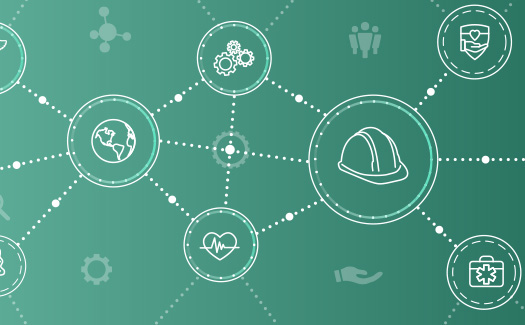Integrated risk management solutions are for much more than just managing claims. They are a complete insurance management system. It includes a variety of functions from policy and claims management to data collection. Here are nine of the key functions of an IRM and how they work.
Policy Management
An IRM gives you a single place to manage all of your insurance policies easily because they’re all included in the overall database. You’ll be able to easily see what coverages you have, and manage them as needed. This is just one of the efficiencies built into an IRM.
Insurer Ratings
In addition to policy management, you will be able to see insurer ratings at a glance. This indicates an insurance company's solvency, financial strength, and ability to pay policyholder claims. You can see what agency issued the rating, and use that information to make better decisions about who carries your insurance and the quality of each insurer you use.
Premium Allocation and Calculation
Premium allocation and calculation are vital to return on your insurance investment. With premium allocation and calculation, you can perform the following functions:
- Utilize your renewal data for the base allocation
- Define minimum and maximum premiums
- Apply weightings, such as for claims and risk management
- Allocate taxes accurately
This helps you calculate premiums, evaluate things like deductibles and coverage, and more. And it’s all integrated into your IRM.
Incident Reporting and Claims Management
When it comes to integrated risk management, this is often what people think of. An IRM generally has a portal for incident reporting that creates a standardized form and language, helping you gather the data you need quickly and easily.
This data can then be used to manage claims related to those incidents, enabling you to track financial settlements, payouts, and even head off potential litigation by taking action early on. Everything you need to manage incidents and claims throughout the process is in a single dashboard.
Asset Management
Need to manage your insurance assets and investments? Your IRM gives you the ability to do this in the same place where you manage the rest of your insurance programs. You can see where your assets are performing well and where you could make changes to improve your return on investment.
Managing assets doesn’t require another program or dashboard. It can all be done inside your IRM software.
Enterprise Risk Management
When it comes to minimizing risk, data is one of the most important elements, along with the analysis of that data. Since your integrated risk management software contains all of your insurance data anyway, it’s the perfect place to analyze incidents, claims, and other information to help you minimize the overall risk to your organization.
For risk managers, this provides a level of convenience and efficiency that is unmatched.
Contracts/Vendor Management
There are several risks when it comes to contract and vendor management and you can minimize all of them. They include:
- Money spent on underperforming contractors
- Opportunity cost
- Redundancy cost
- Missed automatic renewals
Managing these risks in your IRM makes it easy for risk managers to see where these issues are occurring and stop them in their tracks before they get out of control. It’s not only about cost though. It's also about efficiency and saving both time and money.
Risk Financing
When it comes to covering losses from incidents related to risks, not having the funding in place to do so can spell disaster. Within your IRM, you gain visibility into that funding and can ensure you have not only adequate funding but that it is allocated properly.
You can also manage alternative risk financing like catastrophic bonds, loss portfolios, and adverse development covers, and ensure they are ready to cover any unexpected losses.
Renewal Data Collection
Just as with vendors and the risk of missing automatic renewals, it is important to manage your renewal data and understand what renews when, what policies are expiring, and what changes you might expect upon renewal. One of the functions of an IRM is to provide you with this data in the same place where you can manage policies and allocate and calculate premiums.
The value of an IRM is the centralization of data and functions that occurs.
Bringing it All Together
The nine key functions of an IRM enable risk managers to operate more efficiently, manage budgets, and so much more all from one convenient dashboard. From data management and analysis to risk financing and other risk management functions, integrated risk management is the solution for tomorrow.
Ready to take your integrated risk management to the next level? Looking for enterprise risk management and other solutions? Check out Ventiv’s Buyers Guide to Risk Management Technology, and when you are ready, schedule a demo. We’re here to help every step of the way.










